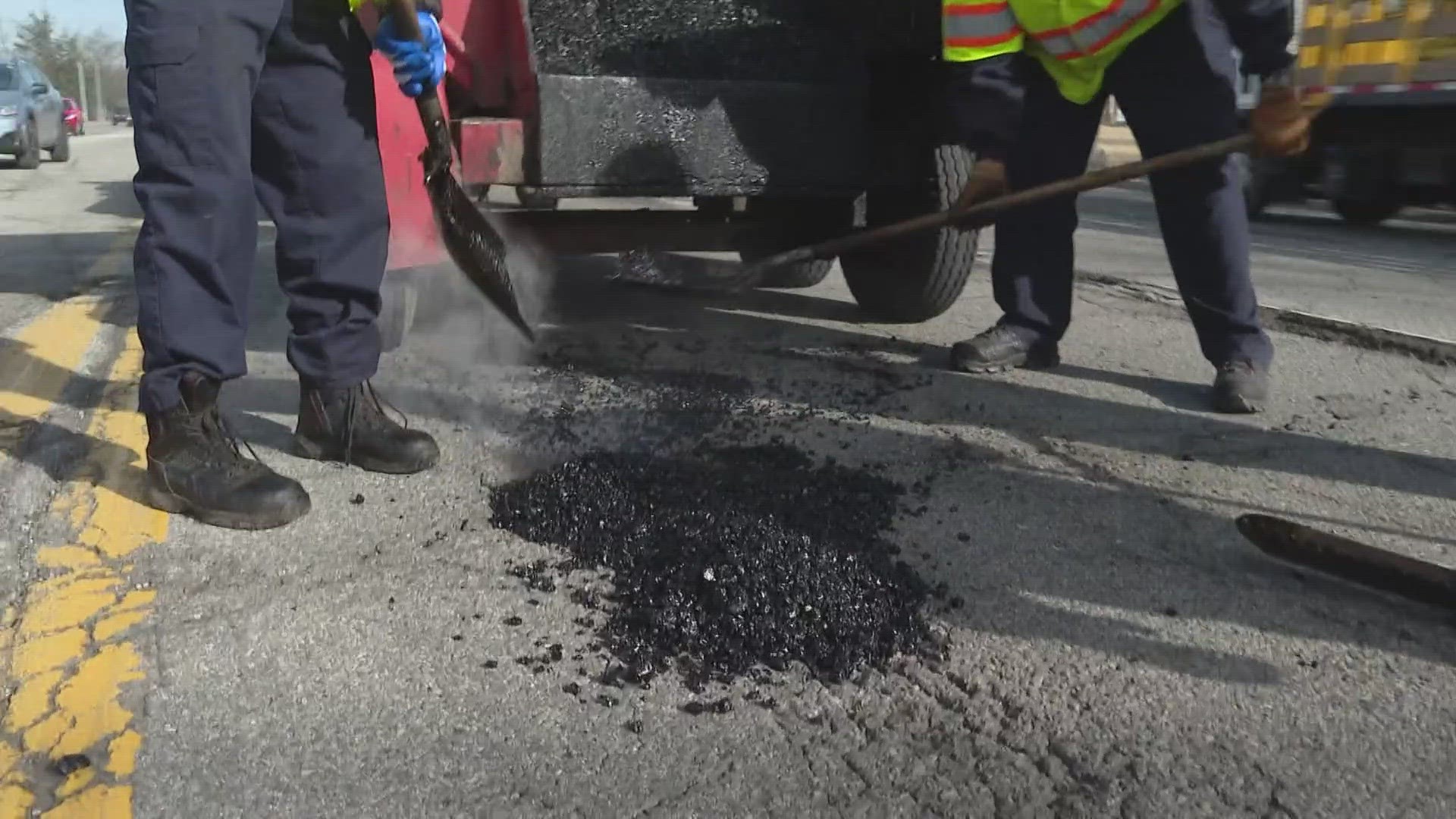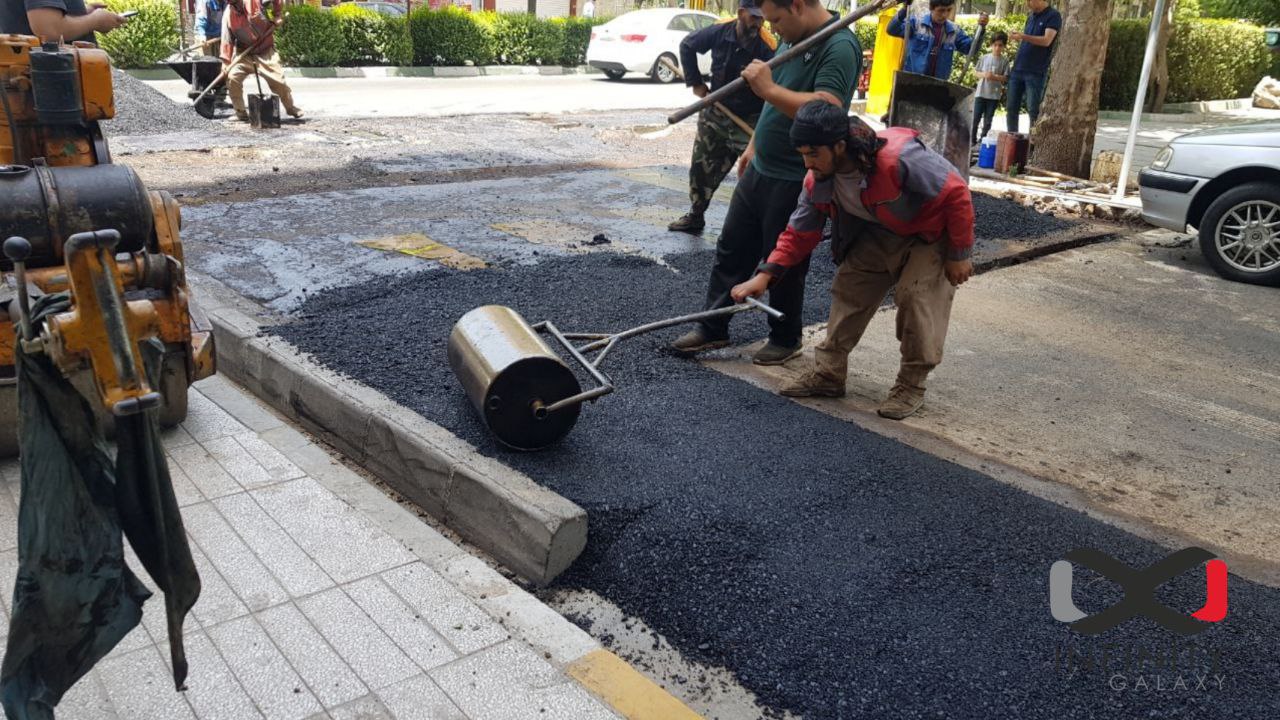Unlocking the Tricks of Hot Mix Asphalt Technology
Exploring the depths of warm mix asphalt innovation uncovers a globe where meticulous processes and exact formulas converge to form our roadways and facilities. The combination of accumulations, binders, and fillers isn't just a building job but a critical orchestration of resilience and efficiency. As we peer right into the elaborate dancing of parts, a tapestry of strength and sustainability unravels. However what exists under this surface area of asphaltic proficiency, and what keys wait to be introduced in the world of leading advancements?
Relevance of Hot Mix Asphalt
Warm Mix Asphalt plays a critical function in modern framework development as a result of its sturdiness and cost-effectiveness. As one of the most frequently used leading product for roads, freeways, and vehicle parking lots, Hot Mix Asphalt supplies a variety of advantages that add to its value in construction jobs. One key advantage is its capacity to endure hefty website traffic tons and rough weather, giving a reputable and resilient surface for transportation networks. In Addition, Hot Mix Asphalt is affordable in both initial building and lasting upkeep, making it a preferred option for lots of framework projects.
The toughness of Hot Mix Asphalt stems from its composition, which consists of aggregates, binder, and filler materials that are meticulously chosen and mixed to fulfill certain performance needs. Generally, the significance of Warm Mix Asphalt in facilities development can not be underrated, as it continues to be a keystone of contemporary construction techniques.
Parts of Asphalt Mixes
The composition of asphalt mixes is composed of carefully chosen accumulations, binder, and filler products that are essential for accomplishing details performance requirements. Accumulations are the key component of asphalt mixes, supplying toughness and stability. The binder, generally asphalt or asphalt cement, holds the accumulations with each other and provides versatility and longevity to the mix.
The combination and proportion of these elements play a substantial role in identifying the high quality and efficiency of the asphalt mix. Designers very carefully make the mix to meet specific requirements, considering elements like web traffic volume, climate conditions, and pavement lifespan. Proper selection and balancing of aggregates, binder, and fillers are important for creating resilient, lasting asphalt pavements.
Mixing and Manufacturing Strategies

As soon as the aggregates are selected, the binder, typically asphalt concrete, is contributed to bind the products with each other. The binder's top quality and amount significantly impact the mix's versatility, stamina, and resistance to environmental elements. Additionally, fillers like hydrated lime or Portland concrete might be included to improve certain attributes of the asphalt mix, such as its workability or wetness resistance.
During production, the aggregates and binder are warmed, typically in between 250-325 ° F(121-163 ° C ), to promote blending and guarantee proper covering of the aggregates. The blending procedure should be comprehensive to achieve an uniform combination that advertises the desired efficiency features of the asphalt. Different techniques, such as batch blending or drum blending, are utilized to achieve high-grade and regular asphalt mixes for construction tasks.
Elements Affecting Asphalt Efficiency
Elements influencing asphalt efficiency encompass a variety of variables that affect the resilience, long life, and overall quality of asphalt sidewalks. One vital element is the quality of products used in the asphalt mix. The kind and source of accumulations, the binder quality, and the ingredients all play a significant duty in identifying the efficiency of the asphalt pavement. The rank of aggregates is critical as it impacts the mix's workability, stability, and resistance to rutting and fracturing.

Environmental problems also affect asphalt performance. Temperature level variations, wetness infiltration, and web traffic loads can all affect the structural stability of the sidewalk. Style factors to consider, such as pavement thickness and drainage, are essential in making sure the long-term performance of the asphalt sidewalk. By thoroughly taking into consideration these elements, designers and professionals can maximize asphalt performance and enhance the life span of sidewalks.
Sustainable Practices in Asphalt Innovation

In addition, the advancement of warm-mix asphalt (WMA) modern technologies has actually gotten grip Visit This Link in recent times. WMA enables the production and placement of asphalt blends at reduced temperature levels compared to conventional hot-mix asphalt, resulting in reduced power intake and greenhouse gas discharges. The usage of porous asphalt blends can assist reduce stormwater runoff concerns by enabling water to infiltrate with the pavement and right into the ground, promoting natural water purification and recharge procedures. By carrying out these sustainable techniques, the asphalt market can add to developing a more eco-friendly and resistant infrastructure network.
Conclusion
In final thought, warm mix asphalt modern technology plays a vital duty in modern infrastructure advancement as a result of its durability and important site cost-effectiveness. By thoroughly balancing elements, using correct blending techniques, and considering various elements, engineers can produce top notch asphalt blends that hold up against rush hour loads and harsh climate condition. Embracing sustainable practices, such as using recycled materials and warm-mix technologies, better boosts the ecological Related Site kindness of asphalt innovation.
Blending and production techniques in hot mix asphalt modern technology entail the exact mix and processing of aggregates, binder, and fillers to develop a high-performance and long lasting asphalt mix.Aspects influencing asphalt performance incorporate an array of variables that affect the sturdiness, longevity, and total top quality of asphalt pavements. Sustainable techniques in asphalt innovation encompass various campaigns aimed at reducing the ecological effect of asphalt production and paving procedures. By integrating reclaimed asphalt sidewalk (RAP) and recycled asphalt roof shingles (RAS) right into brand-new asphalt mixes, the sector can considerably reduce the intake of raw materials and power, while likewise decreasing garbage dump waste.
WMA allows for the manufacturing and placement of asphalt blends at lower temperature levels compared to standard hot-mix asphalt, resulting in lowered power consumption and greenhouse gas discharges.